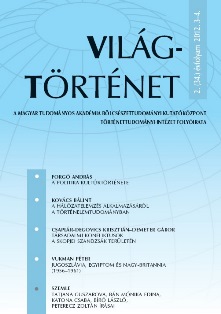A hálózatelemzés alkalmazásáról a történettudományban
Applying Network Analysis in Historical Research
Author(s): Bálint KovácsSubject(s): History
Published by: Magyar Tudományos Akadémia Bölcsészettudományi Kutatóközpont Történettudományi Intézet
Summary/Abstract: In Western European historical research, the “network” concept has gained ever greater ground in the last 20 years; history has developed its own network analytical methods. In Hungary, however, only a handful of researchers have applied network analysis. First, this article surveys the development of network analysis in general (Georg Simmel, Wolfgang Köhler, Kurt Lewin, Jacob Moreno, George Homans, Siegfried Nadel). Second, it presents the conceptual background of network theory (clique, cluster, etc.), with special regard to Albert-László Barabási and Mark Granovetter (defining strong-ties and weak-ties). The spatial and temporal representation of networks poses no simple challenge to historians. In order to illustrate this, the article draws on the visual depictions and analyses in Dauser, Regina–Hächler, Stefan–Kempe, Michael–Mauelshagen, Franz–Stuber, Martin (ed.), Wissen im Netz. Botanik und Pflanzentransfer in europäischen Korrespondenznetzen des 18. Jahrhunderts. [=Colloquia Augustana. Band 24.] Berlin, 2008. The application of network theory in historical research is presented through the pioneering work done by Wolfgang Reinhard, followed by the main achievements of the network analytical “school” in Augsburg to date. Finally, the article presents in further detail three specific areas where network analysis may be applicable: (a) network theory in Medieval and Early Modern Studies; (b) network theory in the analysis of diaspora-type social groups; (c) network theory in the analysis of social associations.
Journal: Világtörténet
- Issue Year: 2012
- Issue No: 3-4
- Page Range: 187-204
- Page Count: 18
- Language: Hungarian

